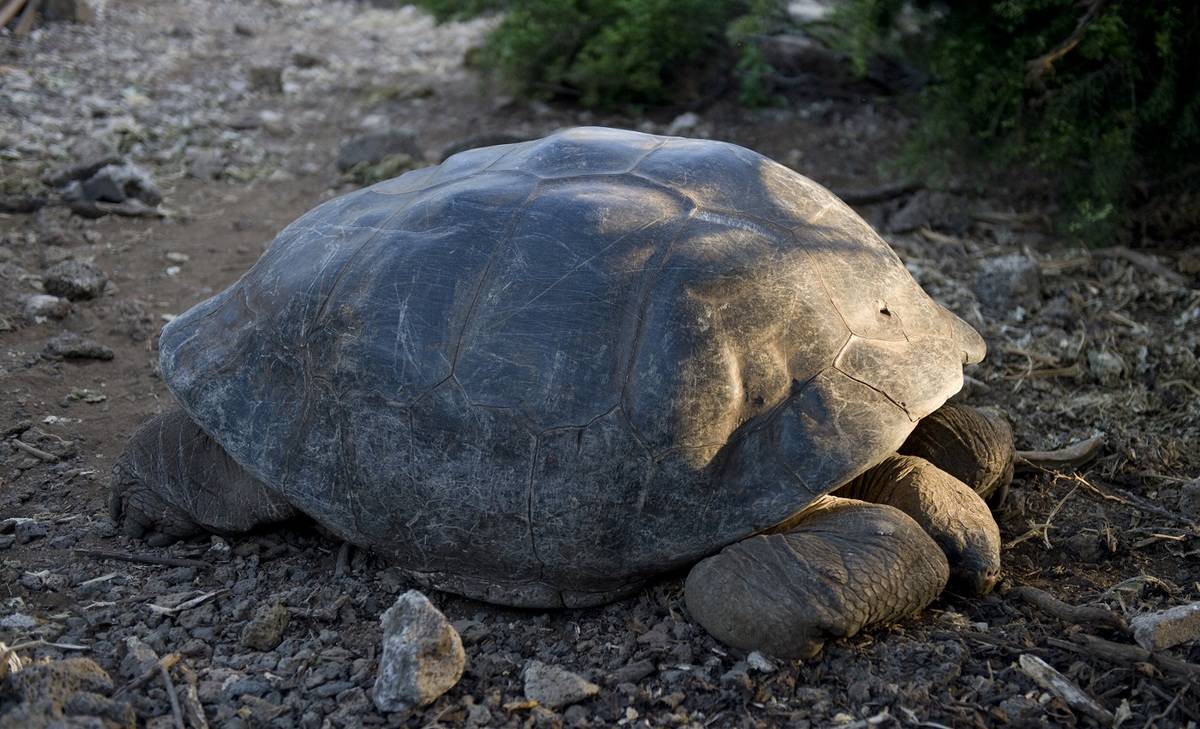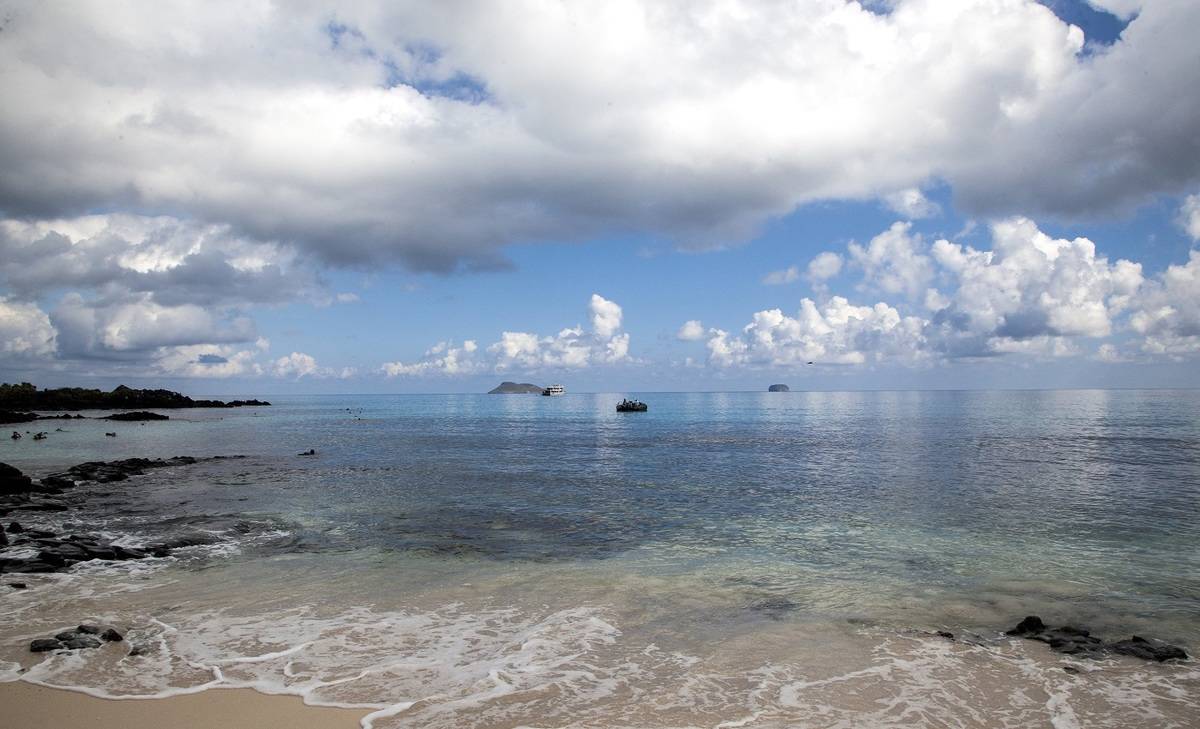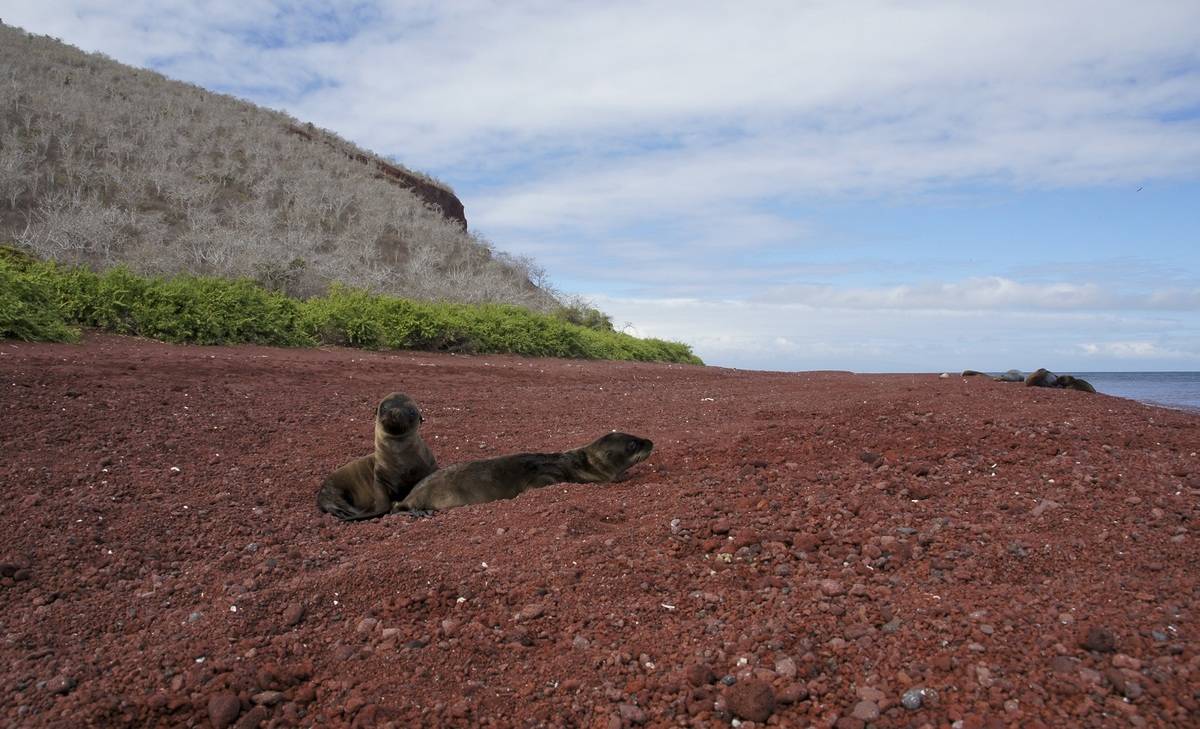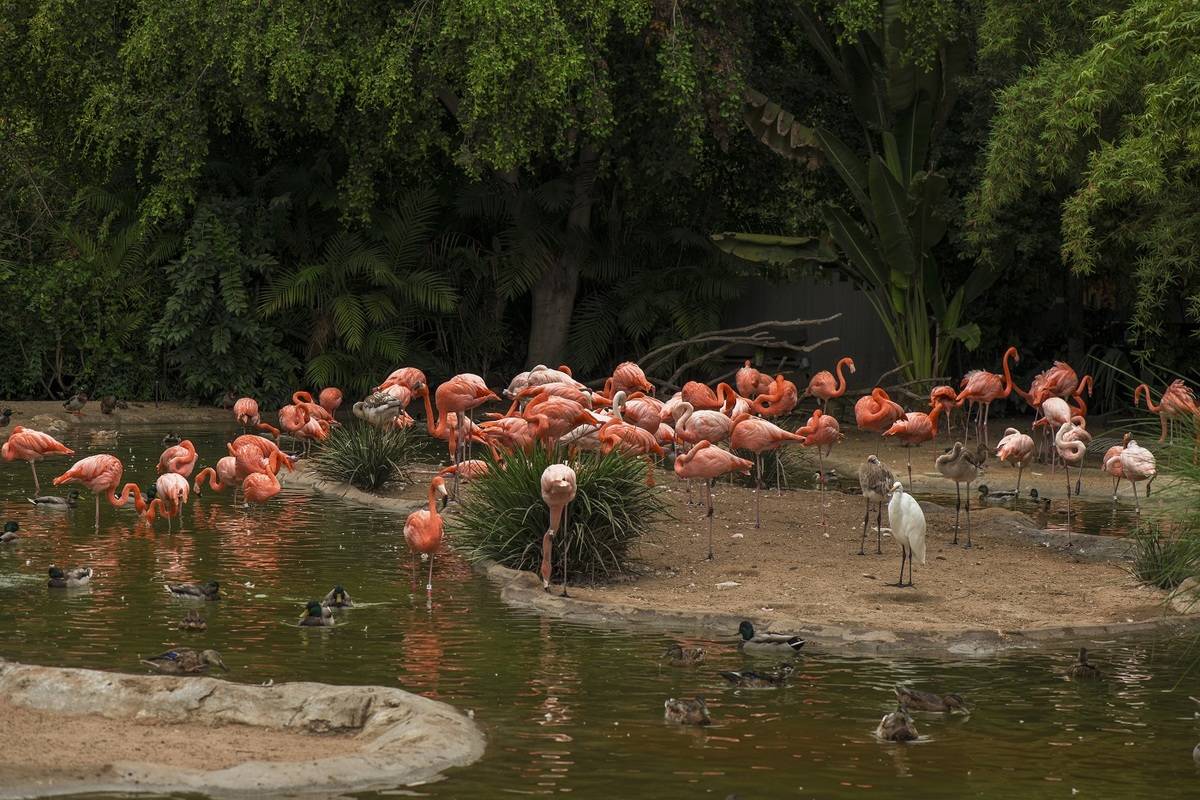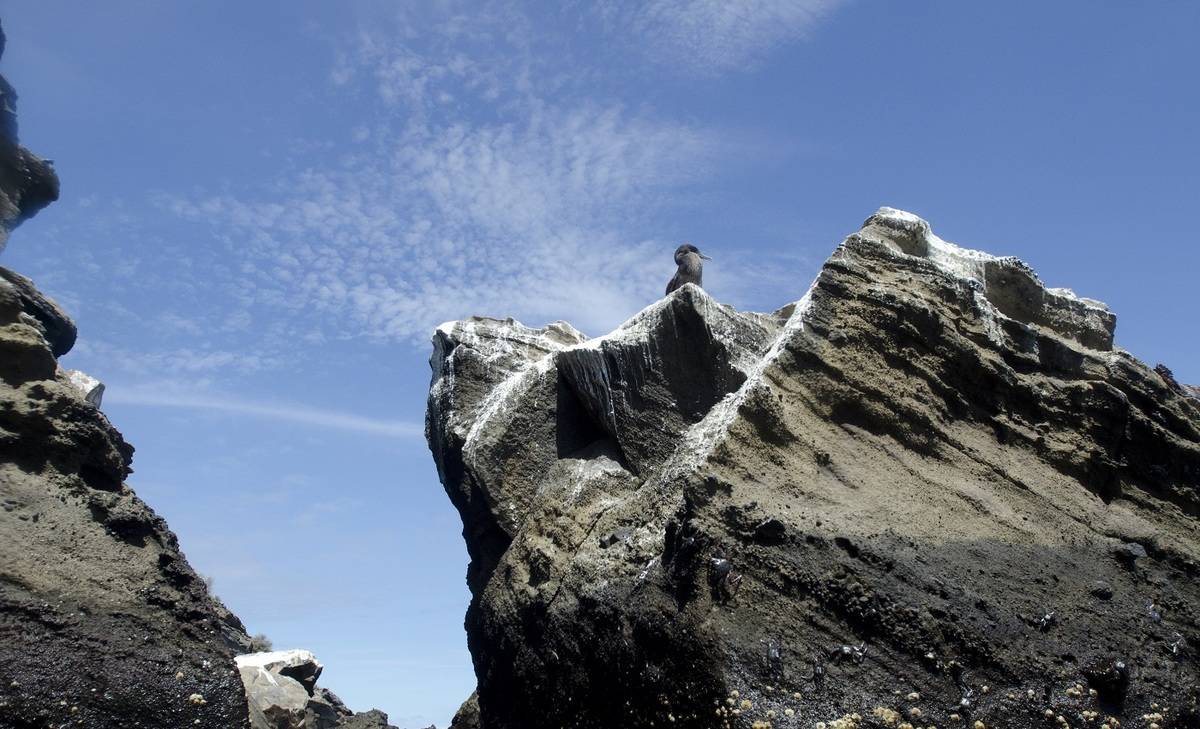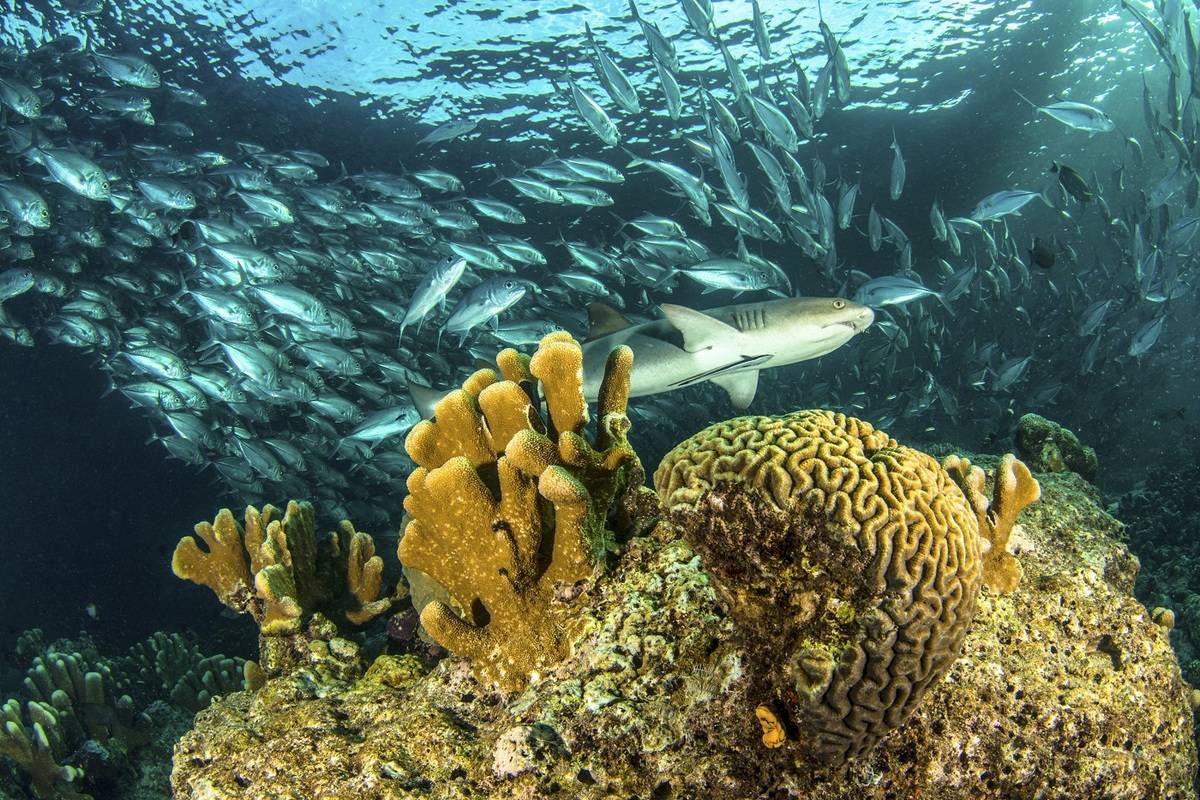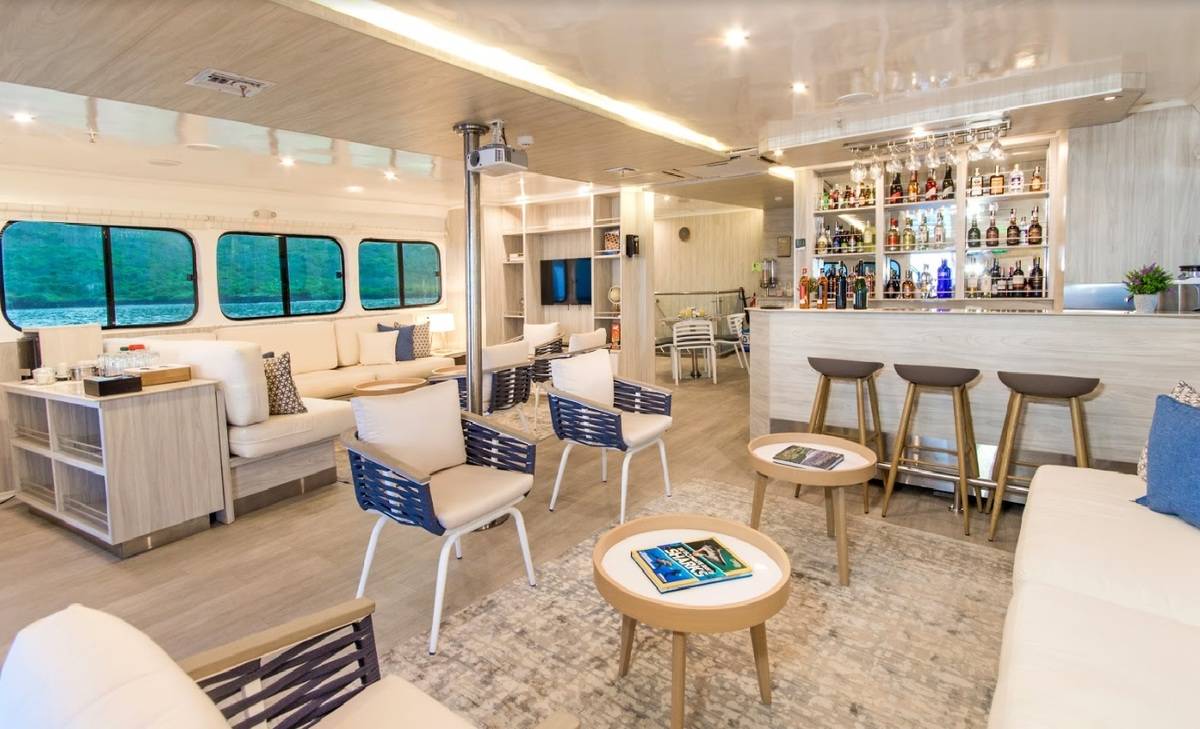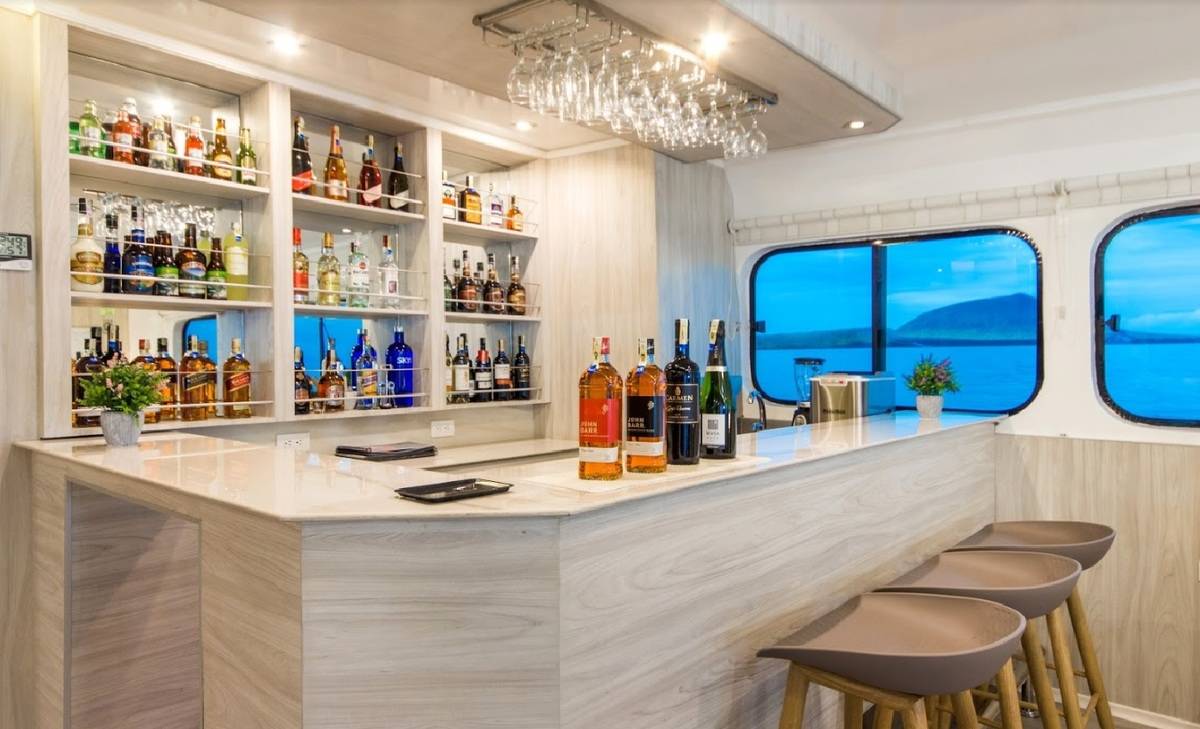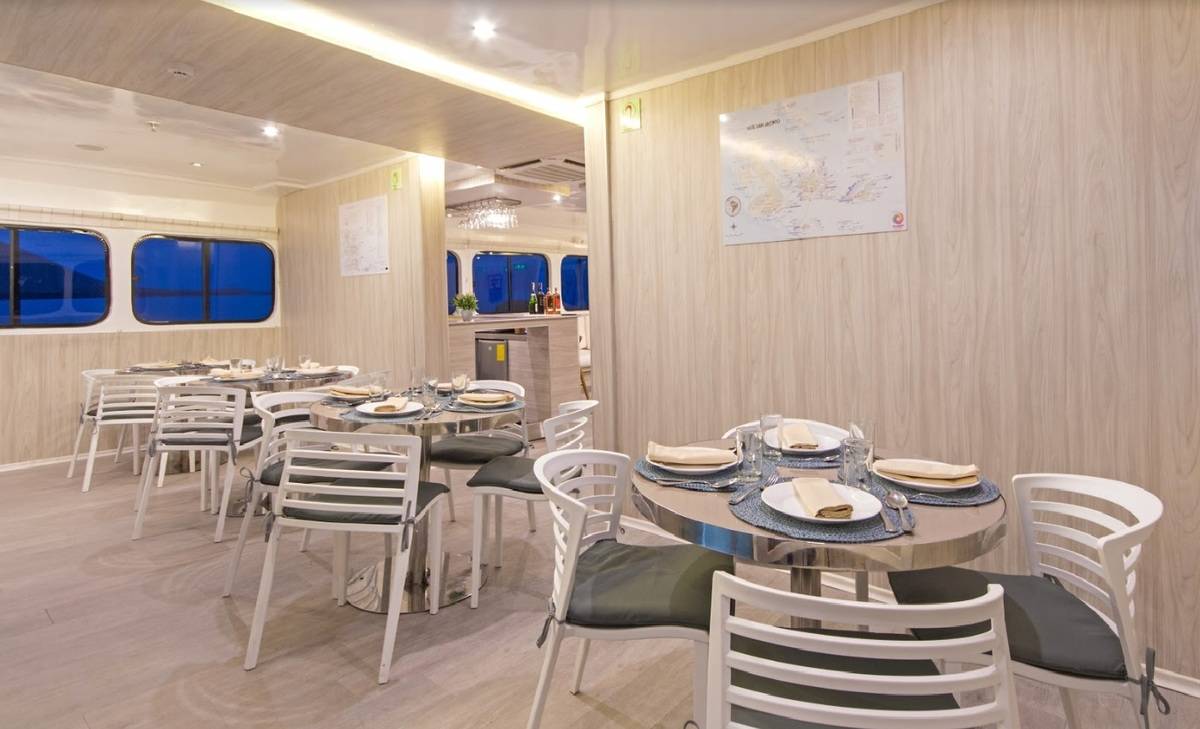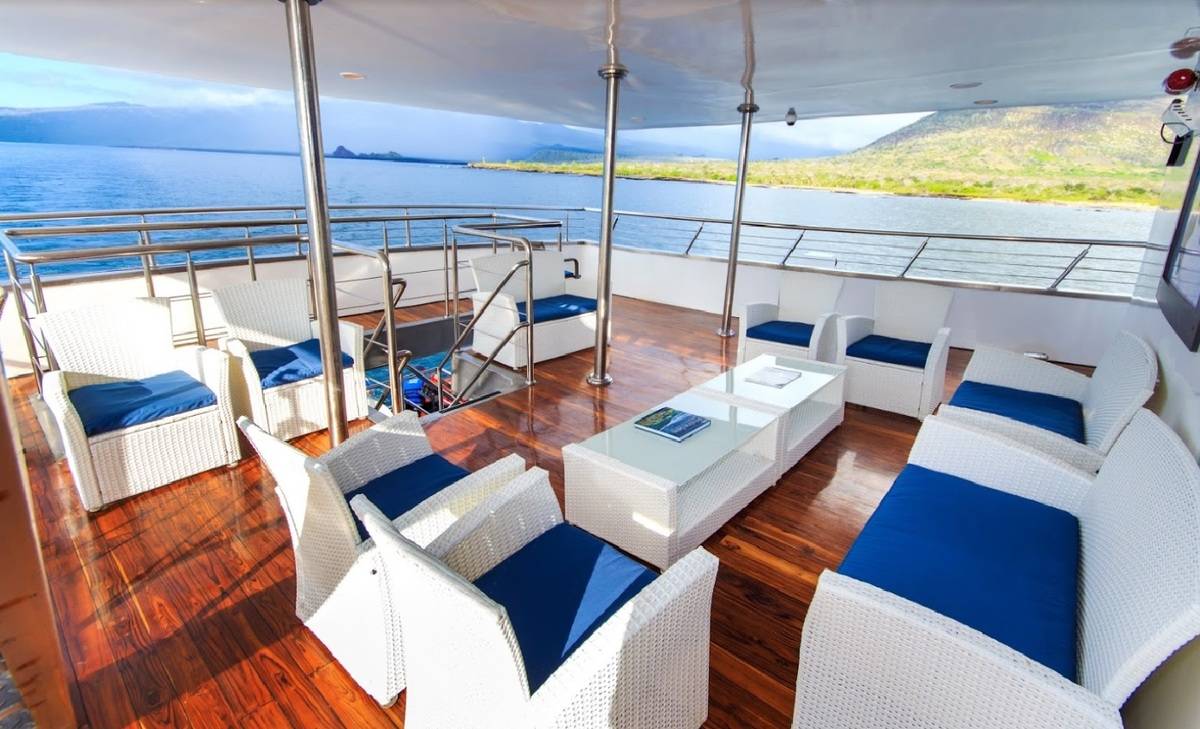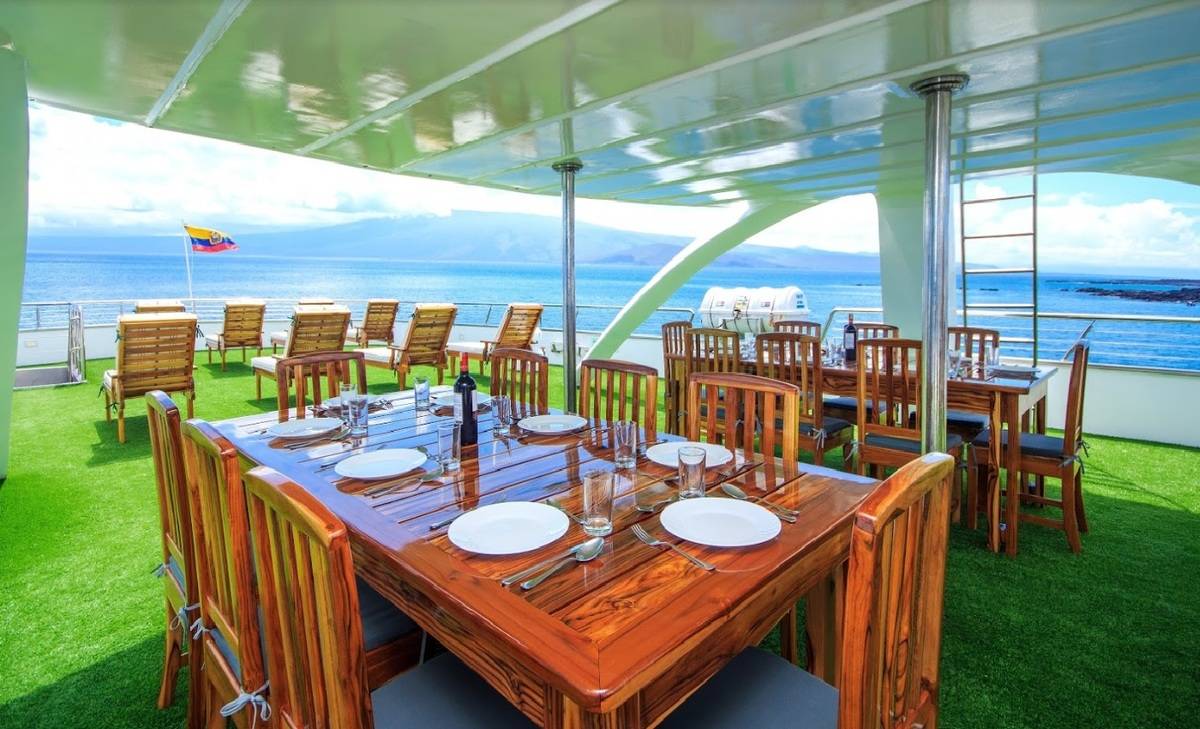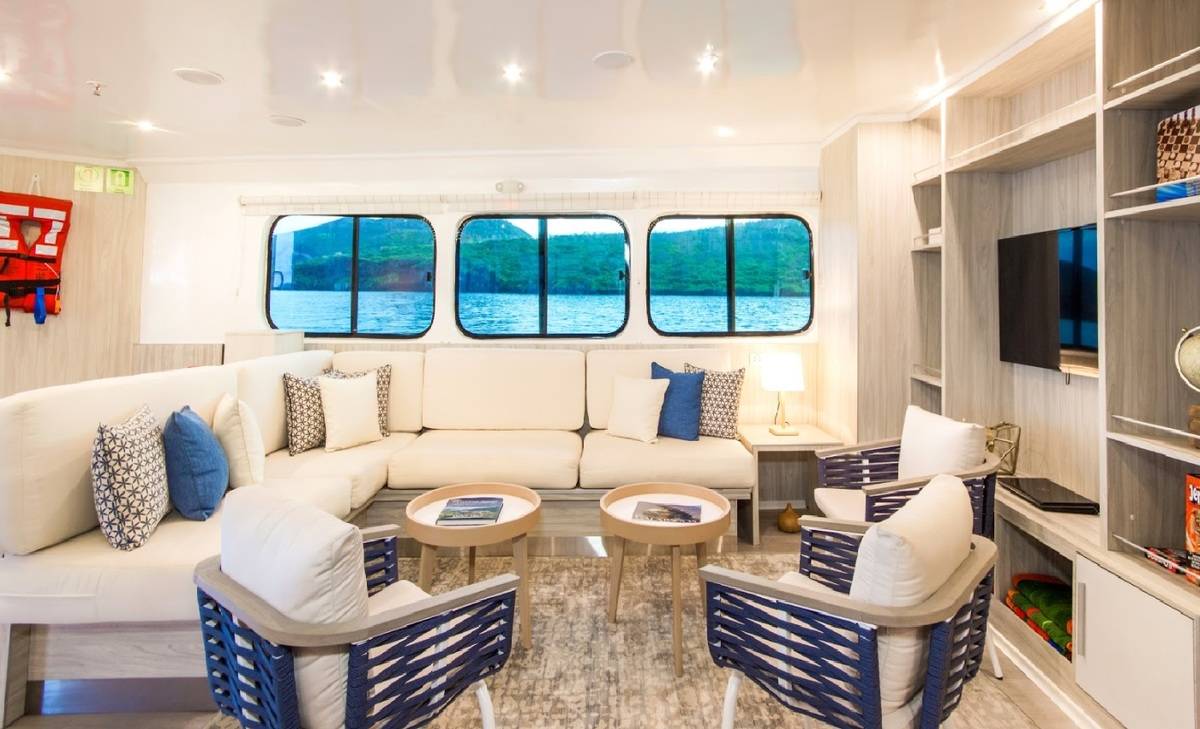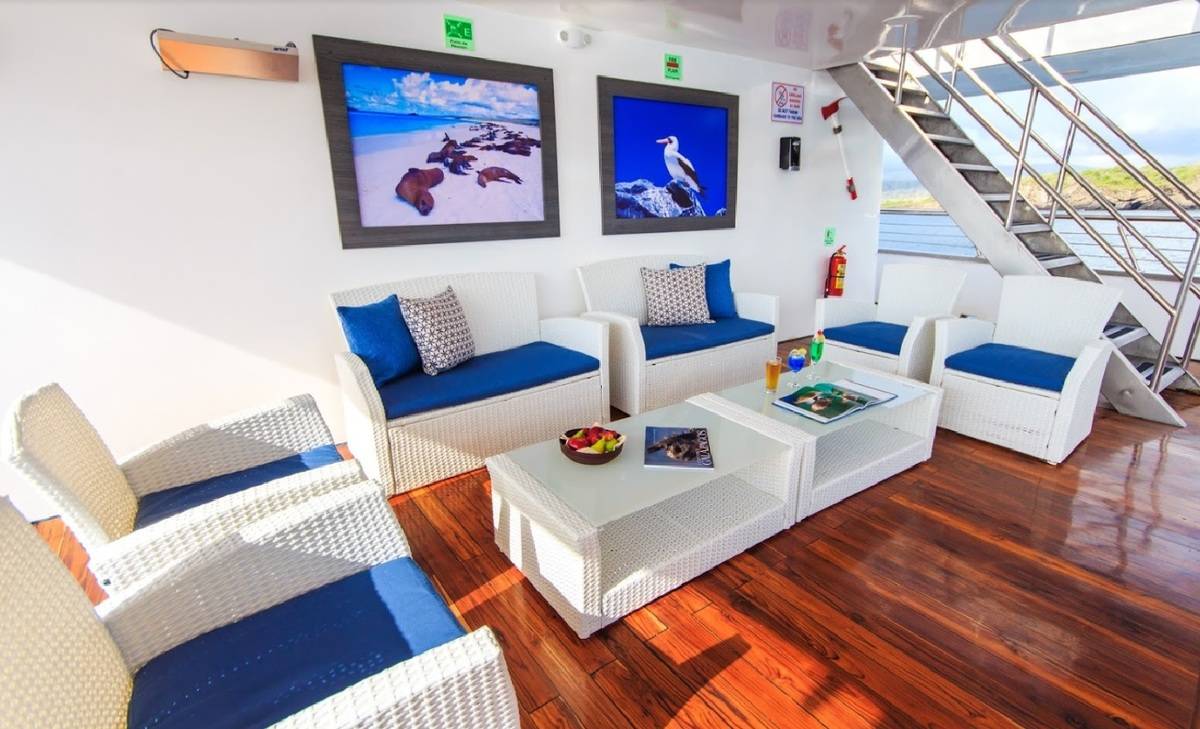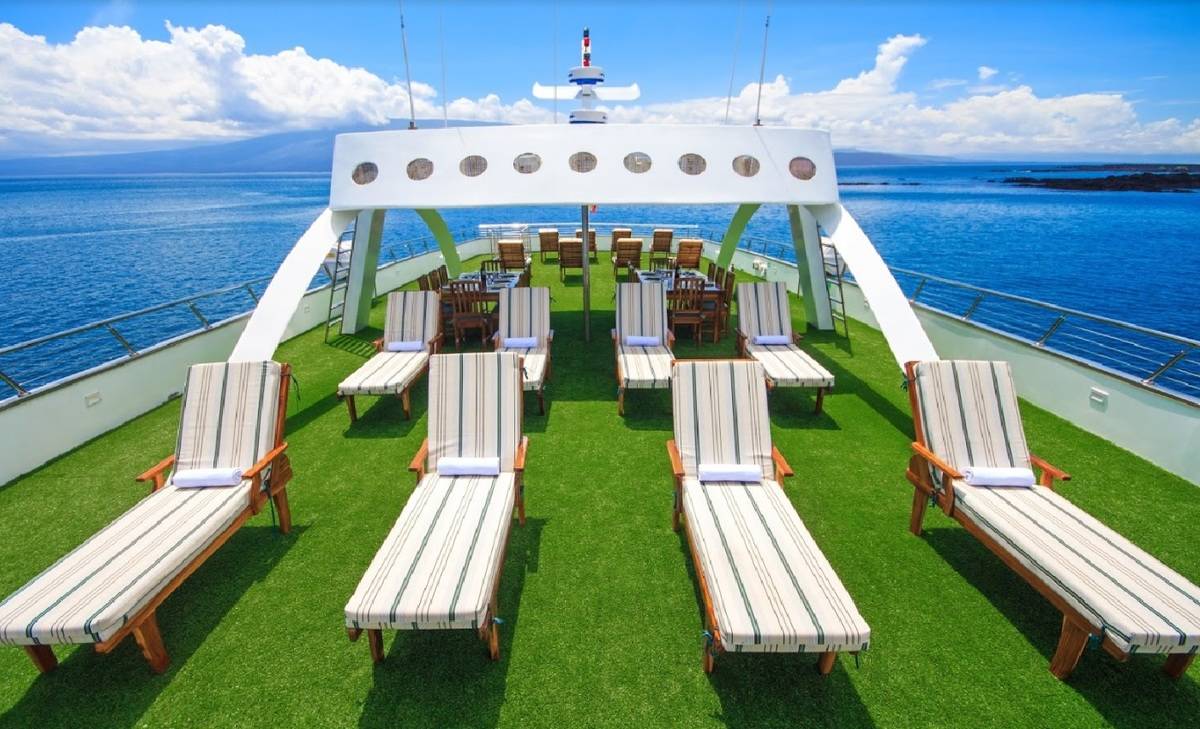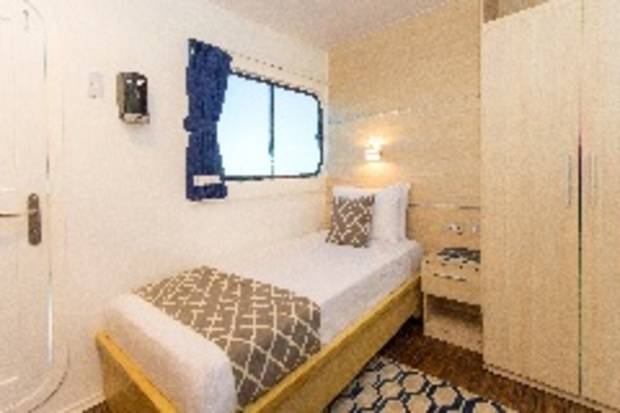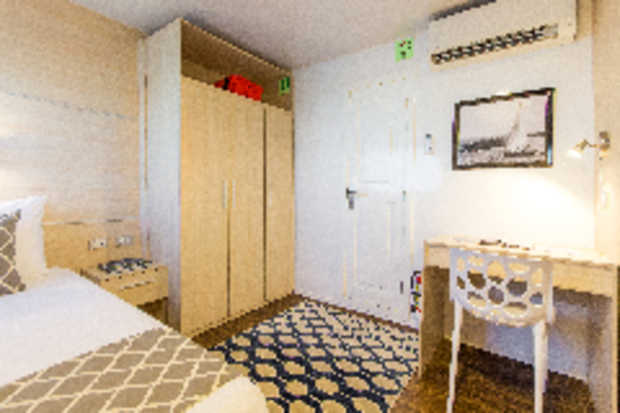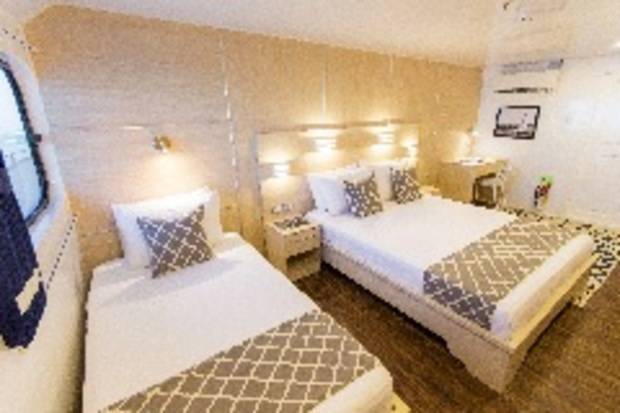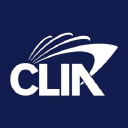Central and Western Islands
8 Days - M/Y Solaris
Our 7-night western itinerary primarily explores the remote and exclusive western islands of Isabela and pristine Fernandina, which are both just recently born out of fire. After navigating around Isabela we will return to the heart of the archipelago for several landings at Santiago and its satellite islets, before finishing on and around Santa Cruz and North Seymour. This cruise itinerary includes two nights of quiet rest at fairly calm anchorage-sites.

Home » 8 Day Solaris: Central and Western Islands
Itinerary Highlights:
- Visit nesting sea turtles on Bachas Beach
- Observe reef sharks in the crystal clear turquoise waters at Tinroreras
- See hundreds of giant tortoise of all sizes at the Tortoise Breeding Centre on Isabela Island
- Snorkel at Tagus Cove among an array of wildlife
- Take a hike along the remarkable red beach of Rabida
Itinerary in Brief:
- Day 1: Embark aboard the Solaris yacht - Las Bachas
- Day 2: Tintoreras & Wetlands, Wall of Tears & Tortoise Breeding Centre
- Day 3: Punta Moreno, Punta Mangle & Tagus Cove
- Day 4: Punta Espinosa & Punta Vicente Roca
- Day 5: Espumilla Beach, Bucaneer Cove & Puerto Egas
- Day 6: Rabida & Chinese Hat
- Day 7: Charles Darwin Station & the Highlands
- Day 8: North Seymour - Baltra Airport
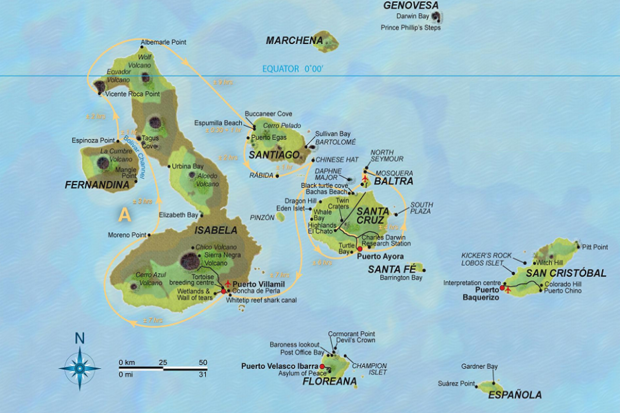
Day 1: Arrival at Baltra Airport & Embark on the Solaris
AM: Arrival at Baltra Airport
Upon arrival at Baltra Airport, you will first pass through an airport inspection point where your TCT (Transit Control Card) will be checked and stamped (please keep this carefully with your passport as you will need to show it again when you leave Galapagos). Here you will also pay the Galapagos National Park entrance fee of USD 100 (unless it has been prepaid). To ensure that no foreign plants or animals are introduced to the islands, your luggage will be inspected as well. At the arrival hall a naturalist guide will meet you and escort you on a short bus ride to the harbor at Baltra. By dinghy you will be taken to the yacht.
PM: Bachas (Santa Cruz)
These two small beaches are found to the West of Black Turtle Cove. Their sand is made of decomposed coral, which makes it white and soft, making it a favorite nesting site for sea turtles. Behind one of the beaches there is a small brackish water lagoon, where occasionally it is possible to observe flamingos and other coastal birds, such as black-necked stilts and whimbrels. The other beach is longer, but it has two old barges that were abandoned during the Second World War, when the USA used Baltra Island as a strategically point to protect the Panama Channel.
Day 2: Explore Isabela Island
AM: Tintoreras (Isabela)
A delightful place reached by a nice zodiac ride. "Tintoreras” are small islands in front of Puerto Villamil coast. There is Heron lava on the lookout on mangrove branch and Galapagos penguins and sea lions often pop out on shore. White-tipped reef sharks are fairly common in the archipelago. Their name in Spanish is “tintorera”, thus the name of this site as they are always found here resting in the shallow waters.
PM: Wetlands, Wall of tears, Tortoise Breeding Centre (Isabela)
This afternoon the wetlands close to Puerto Villamil village will be visited. There are a few lagoons, swamps and mangroves, primarily known for their migrant bird populations. One of the most attractive species to be seen is the flamingo.
You will also visit the Arnaldo Tupiza breeding center, where giant tortoises are reared in captivity on Isabela, to better protect the main sub specie of this island.
The Wall of Tears also known as ‘Muro de las Lagrimas’ is another point of interest; the wall was constructed of clocks of lava rock between 1946 and 1959, when Isabela was a penal colony.
Day 3: Explore Isabela Island
AM: Punta Moreno (Isabela)
Punta Moreno is located on the north coast of Isabela Island between the volcano Sierra Negra and the Cerro Azul volcano. The trail runs along a lava flow Pahohoe (solidified lava in the form of an accordion) into a complex of coastal lagoons. Its main attractions are several species of birds which can be found around the lakes and mangroves.
PM: Punta Mangle (Fernandina) & Tagus Cove (Isabela)
At Tagus Cove, a tour along the cliffs in a zodiac will give the visitors a good chance to see the Galapagos penguin, the flightless cormorant and other sea birds. From the landing dock it is about a 30 minute hike along the trail up to the top of the cliff from where you can view Darwin Lake, an uplifted ultrasaline lake saltier than the sea. You can also see several volcanoes from this location. Look carefully at the graffiti on the surrounding cliffs of the cove. It has been written by pirates, whalers and buccaneers in past centuries.
Day 4: Punta Espinoza & Punta Vicente Roca
AM: Punta Espinoza (Fernandina)
Fernandina is the third largest island in the archipelago and the site Punta Espinosa is located at the northeastern tip of the island. Just across Tagus Cove, is a visitor’s site where various unique species of Galapagos can be seen. Marine iguanas conglomerate in larger groups than in any other island. They bask around in the sand, swim near the shore and sometimes block the way at the landing dock. Among the unique species found here, is the Flightless Comorant. A bird that, due to the lack of predators, evolved differently; it’s wings, tails and feet progressively adapted for swimming. To see these birds, is to witness evolution happening right in front of you. You can observe the flightless cormorants and penguins very closely.
PM: Punta Vicente Roca (Isabela)
At the north-western tip of Isabela Island lies the visitor site Punta Vicente Roca. During a panga ride we will observe impressive geological formations including a large cave and volcanic tuft cones. The cliffs are home to a variety of nesting birds, including Blue-footed and Nazca Boobies, gulls, storm petrels, and Brown Noddy Terns. The calmer waters within the cave are a popular area for sea turtles. Above all, Punta Vicente Roca is an excellent snorkeling area due to the nutrient-rich waters of the Humboldt Current. There is good possibility to spot sea lions, penguins, sea turtles and other marine life.
Day 5: Explore Santiago
AM: Espumilla Beach, Buccaneer Cove (Santiago)
Espumilla beach is located at the northern coast of Santiago Island in James Bay. During the last presence of the “El Niño phenomenon”, one of the two lagoons of this site underwent a process of sedimentation, thus causing the disappearance of a representative colony of flamingos. The main attraction is the palo santo forest. The beach is an important site for nesting marine turtles. At the nearby Buccaneers Cove we have a great snorkeling opportunity.
PM: Puerto Egas (Santiago)
Its black beach is located at the west side of the island and is its main attraction. Volcanic tuff deposits have favored the formation of this special black sand beach. This site is called Puerto Egas, because there was an attempt of the company of Hector Egas to start the exploitation of salt. It failed, because the price of salt in the continent was very low and did not justify its exploitation in Galapagos. Thus the project was abandoned.
Day 6: Rabida & Chinese Hat
AM: Rabida
Rábida Island is unique because of the red color of the rocks and sand. The volcanic material in this island is very porous and external factors as rain, salt water and sea breeze have acted as an oxidizing agent.
A short walk along a trail lead us to a coastal lagoon behind the beach, which permits the observation of land birds, such as finches, doves, yellow warblers and mocking birds. At the lagoon there is a colony of flamingos. The beach is often full with sea lions, and there are good snorkelling opportunities.
PM: Chinese Hat
This is a small islet (1 sq km) located just off the southeastern tip of Santiago Island. It is a recent volcanic cone, shaped like a Chinese hat when seen from north side. On the west side lava formations may be observed, formed under the sea and raised upward, this is why coral heads are found on the lava. This is an excellent visit for interpretation of geological features such as lava tubes and lava flows. The landscape is covered by sea lions colonies, marine iguanas and Galapagos penguins.
Day 7: Santa Cruz (Charles Darwin Station & the Highlands)
AM: Charles Darwin Station (Santa Cruz)
Although the great majority of Galapagos visitors come here to observe and appreciate natural wonders, it is also interesting to learn how the protection and conservation of the islands are carried out. One of the main attractions are the National Park information center, the Van Straelen Exhibition Hall, the Breeding and Rearing Center for young tortoises, and adult Galapagos tortoises in captivity.
PM: Highlands (Santa Cruz)
The road to the highlands leaves from Bellavista, a small village located at a 15 minute drive from Puerto Ayora and passes through the agricultural zone, near the National Park boundary, the Miconia Zone, and then goes to the Fern and Sedge zone. With clear weather (unpredictable) this area affords beautiful scenes of rolling hills and extinct volcanic cones covered with grass and lush greenery all year round. Here you will visit the Twin Craters, which are two pit craters. You will visit as well a local ranch where we can observe the Giant Tortoise specie of Santa Cruz Island in its natural habitat. After our Highlands visit, we will return to Puerto Ayora and the yacht.
Day 8: Explore North Seymour & Disembarkment
AM: North Seymour
North Seymour is an uplifted (different to volcanic origin) island and so is generally flat and strewn with boulders. There are good nesting sites here for a large population of magnificent frigate birds. Blue-footed boobies perform their courtship dance in the more open areas and swallow-tailed gulls perch on the cliff edges. Despite the tremendous surf that can pound the outer shore, sea lions haul out onto the beach and can be found bodysurfing. Watch your step, as the boobies don't worry much about where they nest, and you might just step on one. The trees are dotted with male frigate birds trying to attract the attention of the ladies by inflating their bright red skin flaps (seasonal activity). They sometimes fly in the air to call more attention to themselves. There's a circular path that takes you through the island to a beautiful, rocky shore where the waves crash with a silvery-blue color.
Transfer to Baltra airport for your flight back to mainland Ecuador.
Cabin Details
Single Ocean View Cabin
11m², single bed, ocean view, window, private bathriom, desk, chair,
Double Ocean View Suite
21-26m², queen bed, ocean view, window, private bathroom, desk, chair.
Triple Ocean View Suite
21-26m², queen bed and single bed, ocean view, window, private bathroom, desk, chair.
M/Y Solaris Deckplan
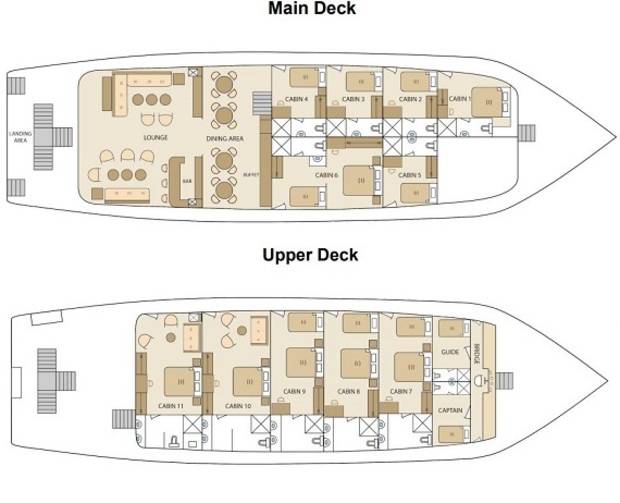
Specifications
- Comfortable monohull yacht
- Capacity: 16 passengers
- Cabins: 11
- Crew: 8
- 35 metre long/ 9metre wide
- Year built: 2018
Whats included?
- Accommodation on board
- All meals, water, tea & coffee
- All excursions as described in the programme (subject to change) with bilingual guide (Spanish / English)
- Airport assistance at Quito airport (when flight and cruise are booked together)
- All transfers to Galapagos (AirportYacht-Airport only included when booked together)
- Snorkelling equipment
- Bath and beach towels
What’s not included?
- International and National (Ecuador-Galapagos-Ecuador) flights
- Galapagos National Park Entrance, US $ 100 (To be paid upon arrival, in cash)
- Transit Control Card, US $ 20 (To be paid upon departure from the mainland to Galapagos, in cash)
- Galapagos Airport Transport, if the flight has not been booked together
- If necessary, single room supplement
- Optional wetsuit (to be paid in cash only)
- Soft drinks and alcoholic drinks (to be paid in cash only)
- Personal expenses, extras & gratuities
- Travel insurance

